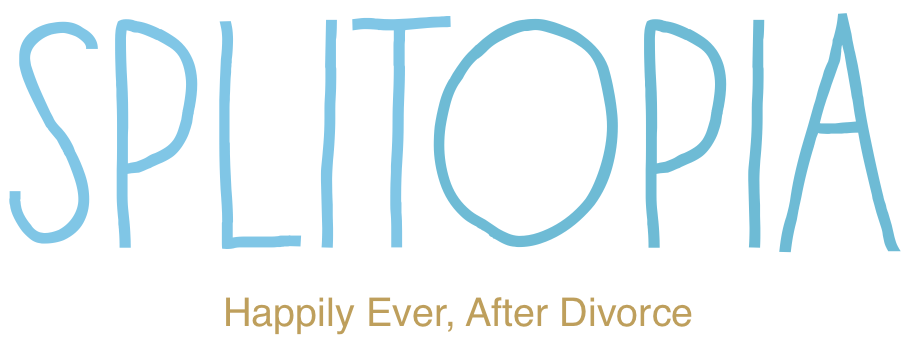Divorce Settlement 101: Interest-Based Negotiation
/I met family law attorney Janice Green at her rambling house in a leafy hollow in Austin, Texas. We were talking in her book-filled study, when a storm suddenly broke loose. Rain pelted the windows. The lights went out. But we sat there talking. I was totally fascinated by the idea of something called “interest-based negotiation,” a way of identifying your “big picture” desires and coming up with alternative routes to meet them. This is a key component of collaborative divorce, and a style of negotiation that I’ve become increasingly adept at in the years after my own divorce and that has continued to improve my relationship with my ex, and probably my life in general.
Green has been practicing family law for 35 years, and is the author of Divorce After 50: Your Guide to the Unique Legal & Financial Challenges (NOLO 3rd Ed. 2016). She is Board Certified in Family Law by the Texas Board of Legal Specialization, is a Fellow in the American Academy of Matrimonial Lawyers, and has been named to Best Lawyers in America, and as a Texas Monthly Super Lawyer. For the past 10 years, she’s focused exclusively on collaborative divorce.
Wendy Paris: I am so interested in the idea of “interest-based” negotiation, both for divorce but also for your life. Can you explain what it is?
Janice Green: Interest-based negotiations is having people negotiate from their interests rather than from positions. It is the core of collaborative family law. A divorcing spouse may take the position, “I want to stay in the house with the kids. Period.” Take it or leave it. If that spouse were to reframe that position into an interest, it might look like this: “I want to remain in the neighborhood so our children don't have to go through a change in schools.” That interest could be met in a number of ways.
Think of interests as the engine, the motivation, the impetus driving a position. They are expressed as goals, fears, reasons, concerns. Positions are black and white. Interests are multi-colored.
Here's another example. A client takes this position, “I want to come out of this divorce with our 2014 Navigator SUV.” If restated as an interest, it could be broader, “I will be hauling around children and their sports gear, and we like to do a lot of off-road drives.” Only one vehicle meets the position; several vehicles could meet the interest.
The seminal work that popularized the concept of interest-based negotiations was published in 1981, Getting to Yes: Negotiating Agreement Without Giving In, by Roger Fisher and William Ury, who came out of the Harvard Negotiation Project.
Wendy Paris: So how does interest-based negotiation work in practice when you’re negotiating a settlement?
JG: One of the first things you do in a collaborative case is have each spouse make a list of his/her interests. This may be done with the party's attorney or with the neutral mental health professional who is a member of the collaborative team. Next you exchange those lists at a joint session and each side has an opportunity to ask questions about the other spouse's interests. All through the process those lists are in front of us, and the parties are reminded that they can modify, delete, add to their interests at any time. They are malleable. Interests also include statements of where a spouse wants to be on the other side of the divorce—e.g., return to school, change careers, live somewhere else—and what kind of relationship they want with the other spouse or their children in the future.
Interests are crucial when negotiating the elements of an agreement. After the assets, liabilities, and other facts and issues have been discovered and identified, you are ready to start generating options for settlement. For example, the question is asked, “How are you going to meet husband's interest number three?” That's when everybody at the table throws out ideas in what I call “green-light thinking.” (Non-judgmental thinking.) People often throw out an option they may not like or think is silly—but it is a possible option. This is the part I love about the collaborative process. This is the creative juncture in the case. People loosen up and become creative in their thinking and problem-solving—sometimes beyond what a judge can or would do. The more interests that are met in the final agreement, the better for everybody and the happier people are.
Wendy Paris: One of the things that interests me in collaborative divorce is the interdisciplinary approach, the way people bring in financial planners and therapists and maybe support for the kids. Do all collaborative cases include these other professionals?
JG: In a lot of states, only the lawyers are involved, but in many areas the collaborative attorneys use the team approach, which I prefer. You may not need both a neutral mental health professional and a neutral financial person, but in most of my cases, I use them both. A good mental health person is not there to diagnose anybody but rather to help the parties excavate their interests, develop options, and work through possibilities. I like to have the neutral mental health person run the joint meetings. They are a neutral organizing force and they reduce the tendency of the attorneys to do all the talking.
Your lawyer is on your side, but the mental health person is neutral. They can tune into the dynamics of the attorneys and the spouses and steer the discussion in a productive fashion.
A neutral financial professional prepares the property/debt inventory and negotiation/settlement spreadsheets—documents that are the focus when negotiating financial issues. In any divorce, even if you just have a house and a retirement plan, you have to identify, value and divide the assets. In litigation, each side prepares their own camp's proposed settlement spreadsheets with their own financial expert. In collaborative, using a neutral financial person both sides agree to is a hell of a lot cheaper than each side preparing their own. I usually use CPAs with experience as experts in family law litigation and who have been trained in collaborative. When you’re caught up in the numbers game, it is important that the negotiation spreadsheet is not seen as favoring one side or the other and comes from a neutral person rather than a tricky lawyer.
Wendy Paris: I’ve spoken to a lot of lawyers who have switched from litigation to collaborative or mediation. Why you?
JG: I was slow getting on the collaborative train because I was a snobbish litigator, addicted to the adrenaline rush of trial work. But when I was finally talked into taking some collaborative training and had a few cases behind me, I was stunned by how effective it was. One of the initial selling points of collaborative is that it helps people shape their own settlements with skills they learn in the collaborative process, and it reduces the adversarial chest-thumping of attorneys’ egos. Plus, if we can keep parents from tearing each other up and creating scars that go on for generations, we will be doing a big public service. In my own family, I've watched my sibling's divorce and custody battle permanently and severely damage relationships in three generations over five decades.
Wendy Paris: When is collaborative not good for a couple?
JG: If there is a recent history of spousal abuse, current alcohol or drug abuse, untreated mental illness at play, a history of heightened spousal distrust regarding financial matters, or if a person is fearful of sitting at the same table as his spouse—those are some of the clues that indicate that the collaborative process may not be the safest divorce track.
As long as the spouses agree to use the collaborative process, they do not have to have any agreements about anything else at the outset.
Screening cases is important. I don’t want to get people into the collaborative world and then have things blow up and bounce them back into litigation. While a lot of the collaborative work product can transfer into the litigation arena, there is still the expense and trauma of hiring new lawyers. Remember, a party's collaborative attorney CANNOT represent them in litigation.
Wendy Paris: What should people look for in a collaborative lawyer?
JG: Make sure your attorney is really practicing collaborative law. Collaborative law requires a different set of negotiating skills, and some litigators don't “get it.” In some areas of Texas family law litigators were very threatened by the collaborative law movement. They did not embrace it and probably, in part, for economic reasons.
A fully litigated family law case usually costs a lot more than a collaborative divorce for the same parties with the same issues.
Some litigators would advertise that they did collaborative, but they really did not. They used it as bait and switch to get people in their office and then advise them not to go collaborative. And there are some litigation attorneys who do a bastardized version of collaborative, call it by a different name —where they modify the collaborative contract with the clients to allow them to continue representing a client into litigation. That is really unfortunate, and in Texas, comes close to violating a statute that spells out the requirements of the collab process.
I also think it’s important for collaborative attorneys to have litigation experience. When you screen a case to see if it’s appropriate for collaborative, you need an experiential base. And you can talk about your client's options with more authority if you've served time in a courtroom.
Please keep in mind that the collaborative attorney is also bound by professional rules requiring zealous representation of one's clients. The collaborative attorney-client relationship retains the same privileges and confidential communication protections that you have with litigation counsel. The only difference is the tone and cordiality demonstrated during the process. There is a lot to be gained with a much less adversarial tone with my opposing council and the opposing party.
In Texas, check out this site for attorney bios of those trained in collaborative divorce: collaborativedivorcetexas.com
Wendy Paris: Thank you so much! This is all really interesting.
***
Wendy Paris is the author of Splitopia: Dispatches from Today's Good Divorce and How to Part Well (Simon & Schuster/Atria, 2016). Splitopia and her work on divorce have been covered by The New York Times, Real Simple, The Washington Post, The New York Post, The Globe & Mail, Psychology Today, The Houston Chronicle, Salon.com, Parents.com, Family Law Quarterly, PsychCentral.com and radio and TV shows nationwide. She has an MFA in creative nonfiction writing from Columbia University, and is an advocate for family law reform. She is divorced, and lives in Santa Monica, California, a few blocks from her former husband, with whom she has a warm co-parenting relationship.
























